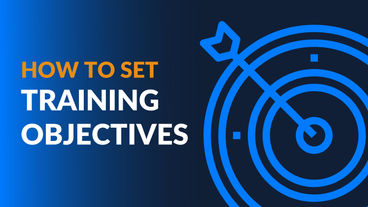
International Women’s Day: 4 Ways to Support Women with Training
Posted on 03/04/21 By Brittany K. King
Organizations with above-average gender diversity outperform companies with below-average diversity by up to 58%. Despite this, gender inequity continues to be a problem in corporate America.
Luckily, women across the nation continue to fight to end gender bias in the workplace.
International Women’s Day is on March 8th. To celebrate, we asked four experts in human resources, training, and business to share how they empower women in the workplace through their company training initiatives.
1. Ask the Women in Your Office to Get Involved
"Building a gender-inclusive culture can be extremely difficult. There are a number of ways to approach the issue of training to gender inclusivity and equality, each with their own strengths and weaknesses.
The most effective training method I have found for making real progress in terms of bringing awareness to the gender gap and helping to build a more inclusive culture is to hold a mandatory panel lunch, where we present a diversity of voices on the issues.
We ask female presenters from our company and the community to participate on the panel, and we discuss such things as use of pronouns, dress code, unconscious bias, the glass ceiling and earning statistics, and women in leadership.
This panel presents over 90 minutes and I think has proved to be extremely effective. We have held this panel twice in the last three years, and both times we have received excellent feedback.
While it can be tough to quantify the efficacy of this training outside of reduction in gender-related HR issues, anecdotally, I can sense a positive change in the workplace."
| For every 100 men promoted and hired to manager, only 72 women are promoted and hired. |
2. Empower and Support Women in Your Workforce
"As a woman in leadership, I support women networking within my own company by hiring women, mentoring women, and placing women in leadership positions.
I make it a priority to ensure that the gender ratio in my company is more than fair. My team of women developers and designers have helped me push my company further than ever before.
They have helped me pivot to a new market and find success even after COVID hurt our business. Before COVID-19, our biggest clients were hotels, caterers, and event venues. They would use our all-in-one employee scheduling tool and dip into our temp pool of vetted event staff.
When COVID hit, our sales plummeted to $0 in 48 hours flat. With the support of my team, I immediately pivoted to helping long-term care homes with their scheduling and staffing needs. The healthcare industry urgently needed support and we were happy to be there to help!
Bottom line: Having a strong group of women to trust in and work with has powered the success of my start-up.
Insider tip: Don’t wait for a women networking group to happen, make your own! Empower the women in your life and they will support you right back."
3. Commit to More than One Anti-Harassment Training
"I think a lot of people believe gender inclusivity training is sexual harassment training and that’s it. While it does include sexual harassment training, gender inclusivity is so much more than knowing what is harassment.
It includes recognizing implicit bias against women, knowing proper and legal hiring practices, understanding gender equity in the workplace, respecting women in leadership, and so much more.
Because it involves a lot of various training, and we are a tight-knit small firm, we don’t focus on all of the 20+ topics out there. However, we do have training on the four mentioned above.
We are lucky to have men in leadership who clearly value the female perspective and we have women attorneys who lead the charge as much as the men.
I am grateful and honored to also have a leadership position as the head of HR, so it is nice for me to run the hiring practices and training for with inclusivity and equity in mind."
| 35% of women have been sexually harassed. 64% of women experience microaggressions at work. |
4. Make Gender Equality Training Top Priority
"We have seen an increasing number of companies recognizing the need for gender-inclusive employee training, and such a training program should definitely offer courses on the basics of inclusivity, gender equality awareness, and managing a diverse workforce.
This is why we are adding [courses on topics such as] The Key Principles of Equality, Diversity and Inclusion, Unconscious Bias, Recognizing Your Privilege, Gender Inclusion, LGBT Awareness and Inclusion, Confronting Discrimination, Becoming an Inclusive Leader, and Adding Value through Diversity and Inclusion.
But apart from [those] training topics [we] are making sure that courses are being delivered by our customers to their employees in a gender-neutral way.
How do we do that? Most characters in our animated training videos are gender agnostic cartoons. And as far as our “celebrity” and human-like characters are concerned, we have ensured to include women inventors and inspirational figures in our list of characters.
Don’t forget that people are more likely to interact with content when they can see a part of themselves reflected in it.
Also, in a time when most people work from home, we place special focus on flexible course delivery. It is extremely important to make sure that your employee training program fits the different schedules of your employees, which may include, for example, homeschooling kids.
Self-paced learning, as opposed to watching a live presentation, as well as training through mobile devices, means that all people, including parents and single parents, are included in the company training program no matter what their schedule looks like."
Related Articles
Multimedia training helps employees to learn new skills and improve their existing skills. The incorporation of multimedia training gives people different opportunities to participate in the learning experience.
Creating a training program doesn't have to be overwhelming. Follow these simple steps (and download our interactive workbook) so you can get started on building an effective employee training program.
Training objectives help guide your organization’s learning strategy and ensure long-term program success. Here is your step-by-step guide on how to write learning objectives for your employee training and development program.





